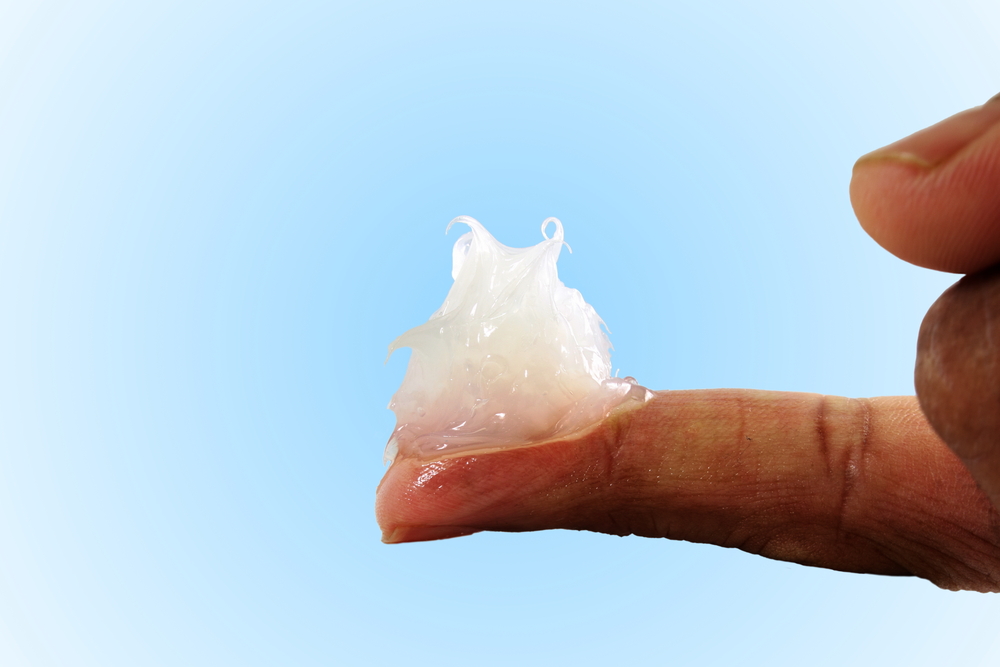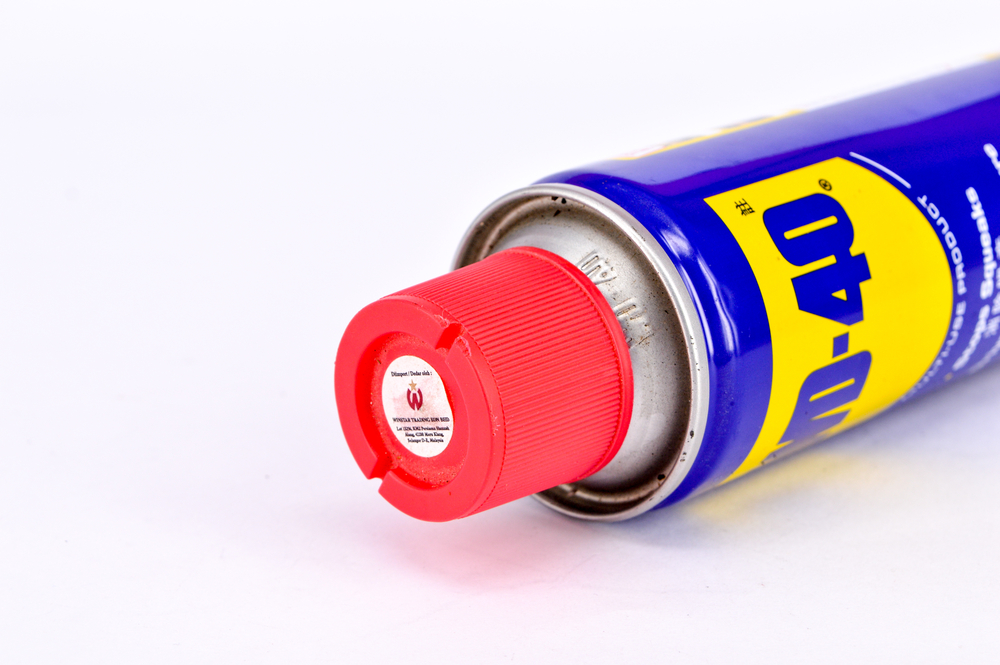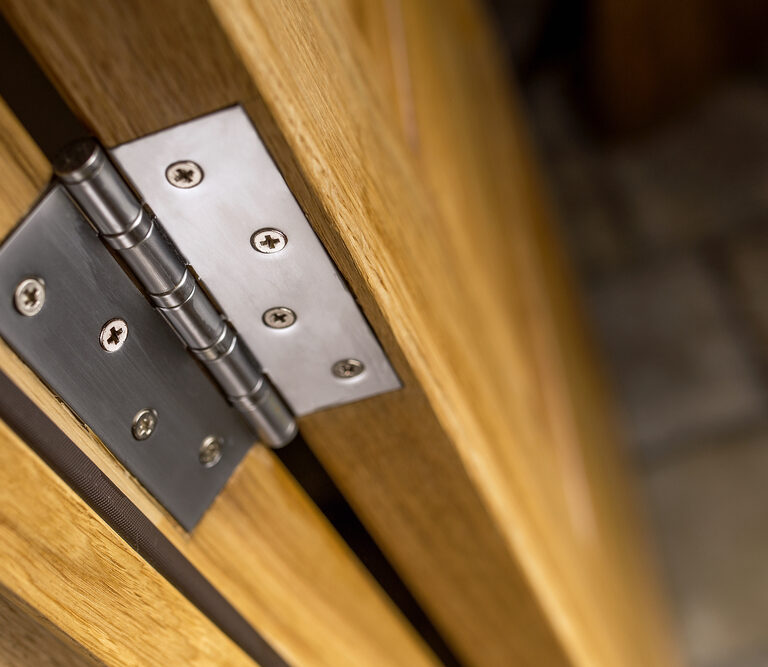Squeak, squeak, squeak. Smash, smash, smash.
That’s the sound of your grating, exasperating, squeaky door hinge —and the subsequent sound of you smashing your head off a wall in frustration.
Stop. Relax. It’s all okay. We’ve got your back. Everything’s gonna be alright.
If you’ve got a squeaky door hinge that’s driving you insane, we’ve got all the tips and advice you need, with lots of simple, affordable, foolproof solutions. All of our top five solutions are quick and easy, and they all use common household items.
Ten minutes from now, that annoying squeaky door hinge will no longer be an annoying squeaky door hinge. Read on!
How to Fix a Squeaky Door Hinge
Removing Hinge Pins to Fix a Squeaky Door Hinge
Before you begin any of the fixes we’ve outlined below, you first need to remove the hinge pins from your door. Your hinge pins are the small rods that your hinges wrap around in order to rotate. These small rods fit inside the hinge, and they’re pretty much always responsible for that dastardly squeaking.
This video is a great, quick how-to guide for removing hinge pins with caps. If your hinge pins don’t have caps, the job is even easier, but that video is a good visual guide anyway —so you should watch it, no matter what your hinges look like.
Pro-tip: when you remove your hinge pins, just make sure you do them one at a time. If you don’t, your door will fall off the frame, and you’ll potentially be left with some much bigger problems than just an annoying noise.
When you lift your hinge pin out, you might need to move your door a little, just to help the hinge pins out.
Alright, now that you know how to get your hinge pins out, here are several things you can do to stop that irritating squeaking…
1. Fixing Squeaky Door Hinges With Petroleum Jelly

You’ve already done the hard bit, which is removing your hinge pins. Here’s some good news —removing these hinge pins is the hardest part for all of these tips.
For this fix, what you next need to do is rub a light coating of petroleum jelly on your pins, and then dab a small amount on the top and bottom of the slots where your hinge pins fit (both the top and bottom).
Put the pins back into their holes, wipe off any excess gunk, then open and close the door a few times to check how well you’ve done. If you can’t hear anything but the sound of your own peaceful thoughts, congratulations.
If you don’t have any petroleum jelly hanging around, you can get similar results from using petroleum-based wax instead. Light a petroleum-based candle, to soften some of the wax. Cover your pins with the melted wax before sliding them back into place. Wipe away any residue and that’s job done!
2. Fixing Squeaky Door Hinges With Steel Wool
If your hinge looks particularly dirty, dusty, and rusty, this is likely the best fix for you —lots of persistent door squeaks are caused by dust, debris and dirt, as they cause excess friction inside the hinge. Rust, dirt and grease are completely unaffected by lubricant alone, so they require something a little more tough.
Take your hinge pins (which you’ve already removed), then give them a good old wash and scrub with some hardy steel wool. Take off as much dust, rust, and dirt as you can, shining them up until they’re as good as new. When you’ve done that, dry them off, and coat them with petroleum jelly in exactly the same way we’ve outlined above.
Now you can insert those pins back into their hinges and look forward to the prospect of squeak-free door use.
Pro-tip: fine steel wool is best for this job, as you want to get rid of all rust, dirt and debris, not just the bigger bits.
3. Fixing Squeaky Door Hinges With Mayonnaise
No, you didn’t read that wrong. You haven’t accidentally stumbled onto a cookery blog —mayonnaise can fix squeaky hinges.
Because mayonnaise is mainly made up of oil, it’s a surprisingly good lubricant — mayonnaise has lots of weird but handy household uses.
Remove your hinge pins as already outlined, then coat them in a light layer of mayo (don’t eat them, even though you might be tempted). Next up, slide them back into the hinge holes. Wipe away any excess mayonnaise, and check your door to see if it’s still squeaking.
It’s best to use the full-fat stuff if you have it, as it contains more oil.
4. Fixing Squeaky Door Hinges With WD-40

Here’s the solution you were expecting first, so you’ll be surprised to find it lurking in the doldrums as our fourth entry.
Using WD-40 to fix squeaky door hinges is a bit controversial in the murky world of DIY, as some people think the stuff makes the squeaking worse. But if you use it properly, that’s rarely the case.
What most people do wrong is this: they spray the WD-40 directly on the hinge without taking the hinge pin out. This can often make things worse, as it covers any existing dirt and debris in a coat of lubricant, clumping it together and making it even more problematic. In short, don’t just blindly spray WD-40 on your hinges.
Instead, follow the same instructions we’ve given you for everything above. Remove your hinge pins, clean them if they’re particularly dirty, then coat the pins and the pinholes in a light coating of WD-40. Then you’re free to stick the pins back in, and you’ll hopefully be left with a squeak-free door.
But, again, it’s best to use one of the other three options above if you can, as WD-40 isn’t the best solution.
5. Fixing Squeaky Door Hinges With Other Household Solutions
The above four options are the best four options.
But, if you somehow don’t own any of the items required, you can also try using olive oil, hairspray, or bar soap. With all three, you (as you’ve probably worked out by now) need to remove the hinge pin before applying them in much the same ways we’ve outlined above.
Replacing Your Hinge Pins After You’ve Fixed a Squeaky Door Hinge
Putting your hinge pins back in is a very easy job —they simply go back in the way they came out.
But just make sure you put them in properly. Knock them in gently but firmly with a hammer, and make sure they’re firmly fixed in place. If they aren’t firmly fixed in place, your door isn’t safe, and the squeaking might continue.
Again, make sure you wipe off any excess lubricant after you’ve replaced your pins. Excess lubricant might turn into gunk (causing more squeaking), which can cause rust, staining, and other damage.
Causes of Squeaky Door Hinges
If you know what causes squeaky door hinges, you can prevent them from ruining your life ever again.
Like most squeaky noises, squeaky door hinges are just caused by friction —so if you can reduce the friction in your hinge, you can reduce the noise caused by that friction. As we’ve mentioned, big causes of squeaking are usually dirt, rust and debris. If your door hinges haven’t been washed for a while, they’re probably clogged up, and all this clogging causes lots of squeaking.
You therefore need to wash dirty hinges before lubricating them. If you simply apply lubricant onto lots of dirt and debris, you’ll just be left with a big old lump of gunk in your hinges, which will make the problem worse, instead of making it better. That’s why it’s important to keep your hinges clean and (as mentioned), to use steel wool if you need to.
Rust is also a big cause of squeaking, which is why you need to regularly apply lubricant to your hinges.
Keep your hinges clean, debris-free, rust-free, and lubed-up, and you’ll never have to bother removing their squeaks again.
See You Next Squeak
And that’s (hopefully) your squeaky problems solved! Fixing squeaky door hinges is a quick, easy, simple job, and you don’t need any specialist equipment to do it. It’s a DIYer’s dream.
If you’ve got any other door-related dilemmas, we can probably help you out. Here are some easy ways to remove a stuck key from a lock, and here’s our guide on how to waterproof wood (which is especially useful for exterior wooden doors). We’re your one-stop shop for DIY advice.
